Ba7.9
Glyph line Ba7 in a way has its beginning already with the last
pair of glyphs in
line Ba6, because here Al-Minhar-al-Asad (the Nose of the
Lion) and Al-phard could be seen at the Full Moon and
the Sun should consequently be at Sad-al-sud:
|
 |
7 |
 |
 |
2 |
 |
|
Ba6-35 (242 = ⅔ *
363) |
Ba6-43 (324 - 74
= 250) |
Ba6-44 |
Ba7-3 (254) |
|
μ Aquarii (*316.0)
Jan 31 (396) =
213 + 183 |
e tagata mau - i te vaha mea
Febr 8 (39 =
404)
Aug 9 (404
- 183 = 221) |
SADALSUD (*325)
Febr 9 (40
= 405) |
NASHIRA (*328) |
|
Febr 12 (43) |
|
Aug 1 (213 = 265
- 52) = 396 - 183
LUGHNASADH |
Febr 10 (40 + 182 = 222)
AL-PHARD →
Das Pferd |
Aug 13 (225)
ι Hydrae
(*145) |
|
θ
Pyxidis (141.5),
MARKAB VELORUM = κ Velorum
(141.5),
AL MINHAR AL ASAD (The Nose of the Lion) =
κ
Leonis
(141.6),
λ
Pyxidis (141.9) |
UKDAH (THE KNOT)
... The orbit of the Earth around
the Sun had remarkably not been designed to be a
perfect circle. ... It rained for 40 days and 40
nights, and 40 + 40 = 80 (0h) ...
288 (Tangaroa Uri 15) - Hora Nui 2
(245) = 43 ...
The topknot was the most sacred
part of a person, and only men had them ... |
|
Egyptian hand |
 |
Phoenician
kaph |
 |
Greek
kappa |
Κ (κ) |
|
Kaph is thought to have
been derived from a pictogram of a hand (in both
modern Arabic and modern Hebrew, kaph
means palm/grip) ...
... The
manik, with the tzab, or serpent's
rattles as prefix, runs across Madrid tz. 22 ,
the figures in the pictures all holding the
rattle; it runs across the hunting scenes of
Madrid tz. 61, 62, and finally appears in all
four clauses of tz. 175, the so-called 'baptism'
tzolkin. It seems impossible, with all this, to
avoid assigning the value of grasping or
receiving. But in the final confirmation, we
have the direct evidence of the signs for East
and West. For the East we have the glyph
Ahau-Kin, the Lord Sun, the Lord of Day; for
the West we have Manik-Kin, exactly
corresponding to the term Chikin, the
biting or eating of the Sun, seizing it in the
mouth.



The pictures (from Gates) show
east, north, west, and south; respectively (the
lower two glyphs) 'Lord' (Ahau) and
'grasp' (Manik). Manik was the 7th
day sign of the 20 and Ahau the last ... |
 |
 |
 |
 |
 |
 |
|
Ba6-44 |
Ba7-1
(326 - 74) |
Ba7-2 |
Ba7-3 (250 + 4) |
Ba7-4 |
Ba7-5 |
|
e tagata hoko |
ki te kea e |
kua rere te manu ki ruga |
o te tagata - koia kua
vaha mea |
ko te tao kua mau - i te
ika |
eko te tao - kua
here ki te ika |
|
Tao.
1. To cook in an oven, to sacrifice. P
Mgv., Mq., Ta.: tao, to cook in an
oven. 2. To carry away. 3. Abscess, bubo,
scrofula, boil, gangrene, ulcer,
inflammation, sore. Mgv.: taotaovere,
small red spots showing the approach of
death. Mq.: toopuku, toopuu,
boil, wart, tumor. Ta.: taapu,
taapuu, scrofula on neck and chin. 4.
Mgv.: a lance, spear. Ta.: tao, id.
Sa.: tao, id. Ma.: tao, id. 5.
Mgv.: taotaoama, a fish. Sa.:
taotaoama, id. 6. Ta.: taoa,
property, possessions. Ma.: taonga,
property, treasure. Churchill. Sa.:
tao, to bake; taofono,
taona'i, to bake food the day before it
is used; tau, the leaves used to
cover an oven. To.: tao, to cook food
in a oven, to bake. Fu.: taò, to put
in an oven, to cook. Niuē:
tao,
to bake. Uvea: tao,
to cook, to bake. Ma., Rapanui:
tao, to
bake or cook in a native oven, properly to
steam, to boil with steam. Ta.:
tao, the
rocks and leaves with which a pig is covered
when cooking; baked, boiled, cooked. Mq.,
Mgv., Mg., Tongareva: tao,
to bake in an oven ... The word refers to
the specific manner of cookery which
involves the pit oven. The suggestion in the
Maori, therefore, does not mean a different
method; it is but an attempt more precisely
to describe the kitchen method, a very tasty
cookery, be it said. The suggestion of
boiling is found only in Tahiti, yet in his
dictionary Bishop Jaussen does not record it
under the word bouillir;
boiling was little known to the Polynesians
before the European introduction of pottery
and other fire-resisting utensils ...
Churchill 2. Kao-kao,
v. Haw., be red. Root and primary meaning
obsolete in Haw. Sam., tao,
to bake. Marqu., tao,
bake, roast, sacrifice. Tah., tao,
baked, boiled, cooked. Greek, καιω,
Old Att. καω,
to light, kindle, burn, scorch. According to
Liddell and Scott, Pott refers
καιω to
Sanskrit çush,
be dry, but Curtius rejects this. In Dravid.
(Tamil) kay,
to be hot, burn. Fornander.
Here. 1. To catch
eels in a snare of sliding knots; pole used
in this manner of fishing, with a
perforation for the line. 2. To tie, to
fasten, to lash; rasp made of a piece of
obsidian with one rough side; cable, tie;
figuratively: pact, treatise. Vanaga. 1. To
lash, to belay, to knot the end of a cord,
to lace, to tie, to fasten, to knot; to
catch in a noose, to strangle, to garrote;
here pepe, to saddle; moa herea,
a trussed fowl; hehere, collar,
necklet; herega, bond, ligament;
heregao, scarf, cravat. 2. Hakahere.
To buy, to sell, to barter, to part with, to
pay for, to do business, to compensate, to
owe, to disburse, to expiate, to indemnify,
to rent out, to hire, to traffic, to
bargain, to bribe; merchant, trader,
business, revenge; tagata hakahere,
merchant, trader; hakahere ki te ika,
to avenge; hakaherega, ransom,
redemption; hakahererua, to exchange,
to avenge. 3. Here ei hoiho, incense.
Churchill. Hereke, festering wound,
cracked skin. Barthel 2. |
|
Febr 9 (40) |
10 |
11 |
12 (408) |
13 |
All Hearts' Day |
|
... On
February 9 the Chorti Ah K'in,
'diviners', begin the agricultural year.
Both the 260-day cycle and the solar year
are used in setting dates for religious and
agricultural ceremonies, especially when
those rituals fall at the same time in both
calendars. The ceremony begins when the
diviners go to a sacred spring where they
choose five stones with the proper shape and
color. These stones will mark the five
positions of the sacred cosmogram created by
the ritual. When the stones are brought back
to the ceremonial house, two diviners start
the ritual by placing the stones on a table
in a careful pattern that reproduces the
schematic of the universe. At the same time,
helpers under the table replace last year's
diagram with the new one. They believe that
by placing the cosmic diagram under the base
of God at the center of the world they
demonstrate that God dominates the universe.
The priests place the stones in a very
particular order. First the stone that
corresponds to the sun in the eastern,
sunrise position of summer solstice is set
down; then the stone corresponding to the
western, sunset position of the same
solstice. This is followed by stones
representing the western, sunset position of
the winter solstice, then its eastern,
sunrise position. Together these four stones
form a square. They sit at the four corners
of the square just as we saw in the Creation
story from the Classic period and in the
Popol Vuh. Finally, the center stone is
placed to form the ancient five-point sign
modern researchers called the quincunx
...
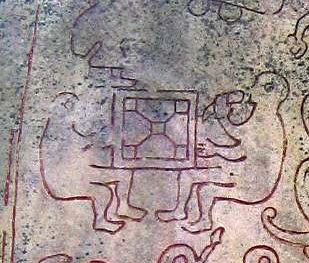 |
|
DEC 7 |
8 |
9 |
10 (408 - 64) |
11
(345) |
12 |
|
STARS
INVISIBLY CLOSE TO THE SUN: |
|
Al Sa'd al Su'ud-22
(Luckiest of the Lucky) /
Emptiness-11 (Rat)
TSIN = 36 Capricorni
(325.2),
ALPHIRK (The Flock) =
β
Cephei
(325.7),
SADALSUD =
β
Aquarii,
ξ
Gruis (325.9) |
No star listed (326) |
CASTRA = ε Capricorni
(327.2),
BUNDA = ξ Aquarii
(327.5)
SIRIUS (α Canis Majoris) |
Mahar sha hi-na
Shahū-26 (Western One in the Tail of the
Goat)
NASHIRA =
γ
Capricorni
(328.0),
ν
Oct. (328.3),
AZELFAFAGE =
π¹
Cygni,
κ
Capricorni (328.7) |
Arkat sha hi-na Shahū-27 (Eastern One in the
Tail of the Goat)
ENIF (The Nose) =
ε
Pegasi, ERAKIS =
μ
Cephei
(329.2),
46 CAPRICORNI, JIH (the Sun) =
κ
Pegasi
(329.3),
ι
Piscis Austrini (329.4),
λ
Capricorni (329.6),
ν
Cephei (329.7),
DENEB ALGIEDI (Tail of the Goat) =
δ
Capricorni
(329.8)
*288.0 = *329.4 - *41.4 |
θ
Piscis Austrini (330.1),
λ
Oct.
(330.7) |
|
BUNDA
(THE FOUNDATION) |
|
STARS
VISIBLE CLOSE TO THE FULL MOON: |
|
Star-25 (Horse)
/
ANA-HEU-HEU-PO-5 (Pillar where debates were
held)
ALPHARD (The Horse) =
α
Hydrae
(142.3),
ω
Leonis (142.6),
τ¹
Hydrae (142.7) |
Al Tarf-7 (The End)
ψ
Velorum (143.3),
ALTERF =
λ
Leonis,
τ²
Hydrae (143.4),
ξ
Leonis (143.5)
*102.0 = *143.4 - *41.4 |
A Hydrae
(144.1)
VEGA (α Lyrae) |
Creation of our present world
UKDAH (Knot) =
ι
Hydrae (145.4),
κ
Hydrae (145.5),
SUBRA =
ο
Leonis
(145.8)
ALPHEKKA MERIDIANA
*104.0 = *145.4 - *41.4 |
5
Imix 9 Kumk'u
Rishu A.-13 (Head of the Lion)
ψ Leonis (146.4),
RAS ELASET AUSTRALIS = ε Leonis
(146.6)
*105.0 = *146.4 - *41.4
|
VATHORZ PRIOR = υ Carinae
(147.9) |
|
UKDAH
(THE KNOT) |
 |
|
Aug 10 (40 + 182) |
11 |
12 (224) |
13 (408 - 183) |
14 |
15 (227
→
π) |
|
JUNE 7 |
8 |
9 (224 -
64) |
10 (161) |
11 |
12 |
|
... Midsummer is the flowering season of the
oak, which is the tree of endurance and
triumph, and like the ash is said to 'court
the lightning flash'. Its roots are believed
to extend as deep underground as its
branches rise in the air - Virgil mentions
this - which makes it emblematic of a god
whose law runs both in Heaven and in the
Underworld ... The month, which takes its
name from Juppiter the oak-god, begins on
June 10th and ends of July 7th. Midway comes
St. John's Day, June 24th, the day on which
the oak-king was sacrificially burned alive.
The Celtic year was divided into two halves
with the second half beginning in July,
apparently after a seven-day wake, or
funeral feast, in the oak-king's honour
... |
The object to the right in the glyph at February 12, half a year
after August 13 (225), is evidently a part in a development
beginning with Sirius / Φ Sagittarii:
|
 |
43
|
 |
|
Ba6-3 (210) |
Ba7-3 (254) |
|
Dec 30 (364 = 181
+ 183) |
Febr 12 (408 =
225 + 183) |
|
Φ Sagittarii
(*284) |
Nashira (*328) |
|
Sirius (*101) |
Ukdah (*145) |
|
June 30 (181) |
Aug 13 (225) |
 |
39 |
 |
3 |
 |
26 |
 |
2 |
 |
|
Ba6-3 (210) |
Ba6-43 |
Ba7-3 (254) |
Ba7-30 |
Ba7-33 (284) |
|
45 + 30 = 75 (=
350 / 4) |
The Full Moon came to the new little king (Regulus)
in day 50 (February 19) in the night after the Sun had been
(at) the Lucky King (Sad-al-Melik). Regulus was visible
at the right ascension line of the Full Moon at glyph number
260 + 1 = 9 * 29, and this was a week after Ba7-3.
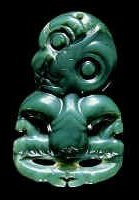
... According to Horatio Gordon Robley,
there are two main ideas behind the symbolism of hei-tiki:
they are either memorials to ancestors, or represent the
goddess of childbirth, Hineteiwaiwa ...
Because of the connection with
Hineteiwaiwa, hei-tiki were often given to a
woman by her husband's family if she was having trouble
conceiving ...
Iva. Nine. P Mgv., Mq., Ta.: iva, id.
Churchill. Ana-iva, pillar of exit = Phakt, α
Columbae (*84). 261 / 9 = 29 →
Ba7-10:
 |
 |
 |
 |
 |
 |
 |
|
Ba7-6 |
Ba7-7 |
Ba7-8 |
Ba7-9
(260) |
Ba7-10 (9 * 29) |
Ba7-11 |
Ba7-12 |
|
e manu oho era |
ki
to ahi e |
e ka ati mai koe i to
tauuru |
e tagata kai era |
ki to hatu e |
kua haga ko
te makere |
mai tae
atu ki te hetu |
|
Ahi. Fire; he-tutu
i te ahi to light a fire. Ahiahi
= evening; ahiahi-ata, the last
moments of light before nightfall. I te
ahiahi-ata he garo te raá ki raro ki te vai
kava. In the evening the sun disappears
under the sea. Ku-tea-á te hetu'u ahiahi,
the evening star has risen. Vanaga. 1.
Candle, stove, fire (vahi); ahi
hakapura, match; ahi hakagaiei,
firebrand waved as a night signal. P Mgv.:
ahi, fire, flame. Mq.: ahi,
fire, match, percussion cap. Ta.: ahi,
fire, percussion cap, wick, stove. 2. To be
night; agatahi ahi atu, day before
yesterday. 3. Pau.: ahi, sandalwood.
Ta.: ahi, id. Mq.: auahi, a
variety of breadfruit. Sa.: asi,
sandalwood. Ha.: ili-ahi, id.
Ahiahi, afternoon, night; kai ahiahi,
supper. P Pau., Mgv., Mq., Ta.: ahiahi,
afternoon, evening. Ahipipi (ahi
1 - pipi 2) a spark, to flash.
Churchill.
... Teke said to
Oti, 'Go and take the hauhau
tree, the paper mulberry tree, rushes,
tavari plants, uku koko grass,
riku ferns, ngaoho plants, the
toromiro tree, hiki kioe plants (Cyperus
vegetus), the sandalwood tree,
harahara plants, pua nakonako
plants, nehenehe ferns, hua taru
grass, poporo plants, bottle gourds (ipu
ngutu), kohe plants, kavakava
atua ferns, fragrant tuere heu
grass, tureme grass (Diochelachne
sciurea), matie grass, and the
two kinds of cockroaches makere and
hata.'
... The division into quarters of a
28-series can be applied to the main phases
of the moon during the visible period as was
as to a (reflex of the old world?) sidereal
month.
The separate subgroup (29 makere - 30
hata) consists of the names of two
types of cockroaches, but in related eastern
Polynesian languages these names can also be
explained on a different level. MAO.
makere, among others, 'to die', and
whata, among others, 'to be laid to rest
on a platform', deserve special attention.
The theme hinted at is one of death
and burial. In our scheme they occur at just
that time when the moon 'has died'! This
lends further support to the lunar thesis.
Barthel 2.
Atu. Particle of
meaning opposite to that of mai; it
refers to the second or third person,
expressing movement away: ka-avai-atu,
give it to him: he-oho-atu au, I
am going there, after you; i-oho-atu-era,
when I had gone there. Vanaga. 1. a.
Directive, of motion from the speaker. b.
Somewhat expressive of the comparative
degree. 2. Pupil; hakaatu, proof;
hare hakaatuga, schoolhouse, class. 3. (hakaatu),
to presage. 4. (hakaatu), mark,
object. Churchill.
Hetu 1. To (make)
sound; figuratively:
famous, renowned. 2. To crumble into embers (of a
bonfire). Hetu'u. Star,
planet; hetu'u popohaga
morning star; hetu'u ahiahi evening star; hetu'u viri
meteorite. Vanaga Hetu 1. Star (heetuu);
hetu rere, meteor; hetu pupura,
planet. P Pau.: hetu, star. Mgv.:
etu, id. Mq.: fetu, hetu,
id. Ta.: fetu, fetia, id. The
alternative form fetia in Tahiti, now
the only one in common use, need not be
regarded as an anomaly in mutation. It seems
to derive from Paumotu fetika, a
planet. Its introduction into Tahiti is due
to the fashion of accepting Paumotu vocables
which arose when the house of Pomare
came into power. 2. Capital letter (? he
tu). 3. To amuse. 4. To stamp the feet.
Hetuhetu, to calk, to strike the
water. Hetuke, sea urchin. Churchill.
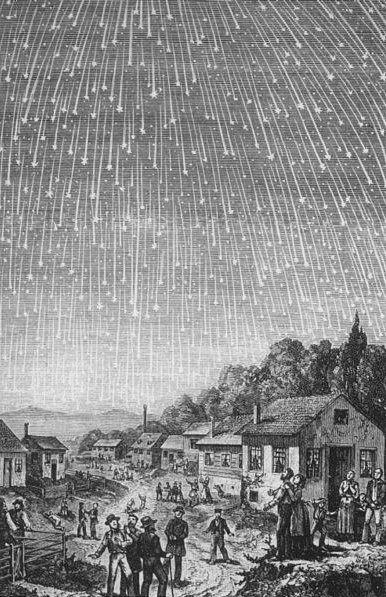 |
|
INVISIBLY
CLOSE TO THE SUN: |
|
Febr 15
(46) |
16 |
17 |
18
(414) |
19 (50) |
20 |
21 |
|
LUCIA |
DEC 14 |
15 |
16 (350) |
17 |
18 |
19 |
 |
|
KUH (Weeping)
=
μ
Capricorni (331.4),
γ
Gruis (331.5)
*290.0 = *331.4 - *41.4 |
No star listed (300 + 32) |
η Piscis Austrini (333.4)
*292.0 = *333.4 - *41.4 |
Rooftop-12 (Swallow)
22h (334.8)
KAE UH (Roof) = ο Aquarii
(334.0),
AL KURHAH (White Spot) = ξ Cephei (334.4),
SADALMELIK (Lucky
King) = α Aquarii,
AL DHANAB (The Tail) = λ Gruis
(334.6), ι Aquarii, ν Pegasi (334.7)
*293.0 = *334.4 - *41.4 |
ι
Pegasi (335.0),
ALNAIR (The Bright One) =
α
Gruis
(335.1),
μ
Piscis Austrini,
υ
Piscis Austrini (335.3),
WOO (Pestle) =
π
Pegasi
(335.7),
BAHAM =
θ
Pegasi (Good Luck of the Two Beasts),
τ
Piscis Austrini (335.8)
|
ζ
Cephei (336.2),
λ
Cephei (336.3), -/270 Lac.
(336.7), λ Piscis Austrini (336.8) |
μ
Gruis (337.0),
ε
Cephei (337.2), 1/325 Lac. (337.3),
ANCHA (Hip) =
θ
Aquarii (337.4),
ψ
Oct.
(337.5), α Tucanae (337.9)
*296.0 = *337.4 - *41.4
*337.4 = *169.4 (Coxa, the Hip in Leo) +
*168.0 |
|
...
If the moral
attitudes of primitive man are hard for the
Western mind to grasp and translate into
familiar terms, there can hardly be one more
so than the Maori notion of cooked food as
the lowest thing, the furthest opposite to
the sacred, in fact filthy.
For us to divest our
minds of Christian notions of good and evil
and substitute the concept of simple
payment, harm for harm (or 'revenge', as we
commonly call it with a misleading moral
overtone), is simple enough - perhaps
because every schoolchild has at some time
known the latter in his horrid heart. Even
the Maori custom of weeping over friends
when they arrive instead of when they depart
has a certain logic that is not beyond our
comprehension. But to enter, against all
conditioning, into the minds of a people for
whom cooked food and the act of eating could
carry the overtones of meaning that we in
our greater wisdom attach to their physical
opposites and to sex, is a good deal harder.
One has somehow to throw the mind into a
state of being that is radically unlike
ours. Yet if the trick can be done, a light
comes on ... |
|
VISIBLE
CLOSE TO THE FULL MOON: |
|
υ¹
Hydrae (148.4), RAS ELASET BOREALIS
(Northern Head of the Lion) =
μ
Leonis
(148.7)
*107.0 = *148.4 - *41.4 |
TSEEN KE (Heaven's Record) =
φ
Velorum
(149.9) |
ν Leonis (150.1), π Leonis (150.6) |
υ² Hydrae (151.8) |
Al Jabhah-8 (Forehead)
/
Maghā-10 (Bountiful) /
Sharru-14 (King)
10h (152.2)
AL JABHAH =
η
Leonis (152.4),
REGULUS (Little KIng) =
α
Leonis
(152.7)
*111.0 = *152.4 - *41.4 |
λ Hydrae (153.2) |
ADHAFERA = ζ Leonis,
TANIA BOREALIS (Northern Gazelle) = λ Ursae
Majoris, SIMIRAM = ω Carinae
(154.7) |
|
16 (46 +
182) |
Aug
17 (229) |
18 |
19 |
20 (50 +
182) |
21 |
22 |
|
13 (80 +
84) |
JUNE 14 |
15 (166) |
16 |
17 (80
+ 88) |
18 |
19 |
.jpg)
 |
The rongorongo text tells us that the end of February
was connected to March 1, when η Carinae was at the
right ascension line of the Full Moon.
... The leap day was introduced as part of the
Julian reform. The day following the Terminalia
(February 23) was doubled, forming the 'bis
sextum - literally 'double sixth', since
February 24 was 'the sixth day before the Kalends of
March' using Roman inclusive counting (March 1 was
the 'first day') ...
In the Golden Age of the Bull this would have happended
in day number 19 * 19 = 361 (*281). At the time of
rongorongo the precession of the Sun had turned the
starry dome ahead in the year so the position of *281 now had been given to Vega.
*162 (η Carinae) - *64 = *98 = *281 (Vega) - *183.
Anciently (before adopting the Sun calendar) the top
star in the north had been located at the other side of the
pole compared to Polaris.
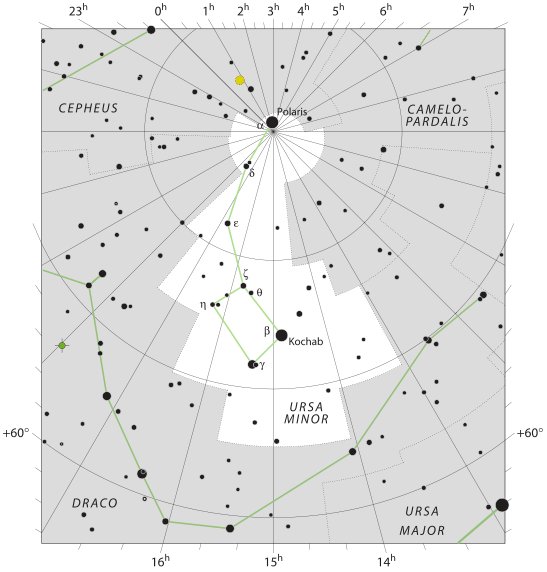
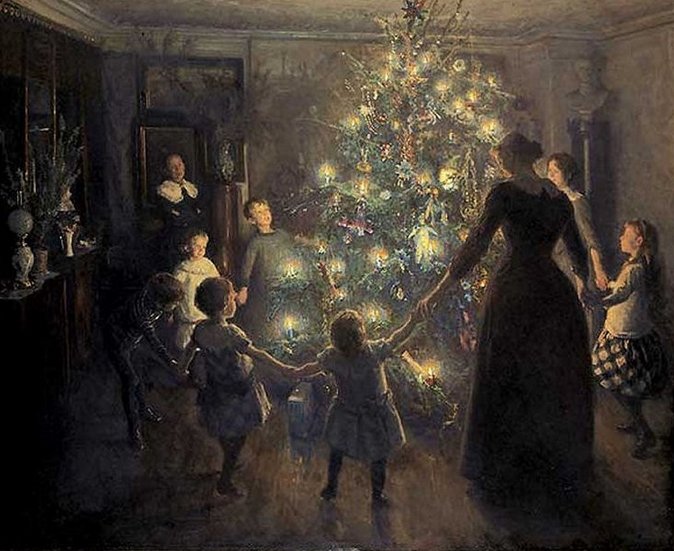
 |
 |
 |
 |
 |
 |
 |
 |
|
Ba7-13
(264) |
Ba7-14 |
Ba7-15 |
Ba7-16 |
Ba7-17 |
Ba7-18 |
Ba7-19 |
Ba7-20 |
|
e kua tere koia |
e tagata oho era - ki te
Raa e |
ka Maroa ra e teie |
ki te henua - kua moe te
manu utu hakaraoa |
mai tae atu ki te marama |
o to hau tea - e kua
haati ïa to kava |
koia ra kua hai ki tona
matua |
eko tona ariki - e koia
ra i tona tamaiti |
|
INVISIBLY
CLOSE TO THE SUN: |
|
2-22 |
Terminalia |
24 (420) |
25 |
Febr 26 |
27 |
28 (59) |
March 1 |
|
DEC 20 |
SOLSTICE |
22 |
23 |
X-MAS
EVE |
25
(423 - 64) |
26 (360) |
27 (19 *
19) |
|
Al Sa'ad al Ahbiyah-23
(Lucky Star of Hidden Things) /
Shatabisha-25
(Comprising a Hundred Physicians)
ε
Oct. (338.1),
ρ
Aquarii
(338.2), 2/365 Lac. (338.5),
SADACHBIA =
γ
Aquarii
(338.6),
π
Gruis (338.9) |
β/172
Lac. (339.2),
4/1100 Lac. (339.4),
π
Aquarii
(339.5)
*298.0 = *339.4 - *41.4
CASTOR (α Gemini) |
δ Tucanae (340.1), ρ Cephei (340.2), ν
Gruis (340.3),
ζ Aquarii, δ Gruis (340.4),
5/1100 Lac. (340.7), σ Aquarii, 6/650 Lac.
(340.9)
*299.0 = *340.4 - *41.4
PROCYON (α Canis Minoris) |
υ Oct. (341.0), α/91 Lac. (341.1),
HOMAN (Hero) = ζ Pegasi,
β Piscis Austrini (341.2), ν Tucanae
(341.5),
υ Aquarii
(341.9) |
η Aquarii
(342.1),
σ Gruis (342.4),
SITULA (Water-jar) = κ Aquarii
(342.7)
*301.0 = *342.4 - *41.4 |
ε Piscis Austrini (343.5), ο Pegasi, β Gruis
(343.8) |
ρ Gruis (344.0),
MATAR (Rain) = η Pegasi
(344.2), η Gruis (344.6), β Oct. (344.7) |
λ Pegasi (345.0), ξ Pegasi (345.1), ε Gruis
(345.3), τ Aquarii (345.7), ξ Oct. (345.8),
μ Pegasi (345.9) |
|
...
γ, 4.1, greenish,
on the right arm at the inner edge of the
Urn, and the westernmost star in the Y, is
Sadachbia, from Al Sa'd al Ahbiyah,
which has been interpreted the Lucky Star of
Hidden Things or Hiding-places, because when
it emerged from the sun's rays all hidden
worms and reptiles, buried during the
preceding cold, creep out of their holes!
 |
|
VISIBLE
CLOSE TO THE FULL MOON: |
|
ALGIEBA (The Mane) =
γ
Leonis,
q Carinae (155.5) |
TANIA AUSTRALIS (Southern Gazelle) =
μ
Ursae Majoris
(156.0),
GHOST OF JUPITER = NGC3242 Hydrae
(156.8) |
Extended Net-26b (Ox)
μ
Hydrae
(157.1) |
Maru-sha-arkat-Sharru-15 (4th Son behind the
King)
SHIR (Possessing Luminous Rays) =
ρ
Leonis
(158.9) |
p Carinae (159.3) |
φ Hydrae (160.3) |
No star listed (161 →
φ) |
VATHORZ POSTERIOR = θ Carinae
(162.1),
PEREGRINI = μ Velorum,
η Carinae
(162.6) |
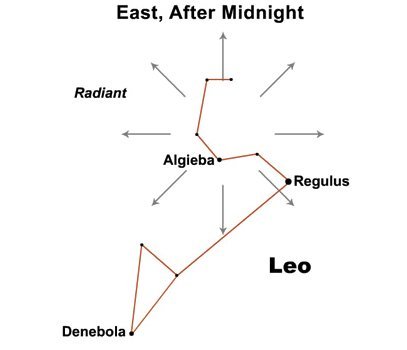 |
|
Aug 23 |
24 (236) |
25 |
26 |
27 |
28 (240) |
29 |
30 |
|
JUNE 20 |
SOLSTICE |
22 |
23 |
DAY OF ST
JOHN |
25
(240 - 64) |
26 (354 / 2) |
27 (178) |
10 days later was Ba7-30 (→
210) and here the vaha mea figure in front would have changed
its
form, evolving into a female (ahine):
... When this tremendous task had been
accomplished Atea took a third husband, Fa'a-hotu,
Make Fruitful. Then occurred a curious event. Whether
Atea had wearied of bringing forth offspring we are not
told, but certain it is that Atea and her husband
Fa'a-hotu exchanged sexes. Then the [male] eyes of
Atea glanced down at those of his wife Hotu and
they begat Ru. It was this Ru who explored the
whole earth and divided it into north, south, east, and west
...
 |
39 |
 |
3 |
 |
26 |
 |
2 |
 |
|
Ba6-3 (210) |
Ba6-43 (324 - 74) |
Ba7-3 (354 - 100) |
Ba7-30 (355 - 74) |
Ba7-33 (210 + 74) |
|
45 + 30 = 75 = 72
+ 3 |

 |
 |
|
Ba7-21 (272) |
Ba7-22 |
|
e kua hati te kava matahatu |
i te henua |
|
INVISIBLY CLOSE
TO THE SUN: |
|
March 2 (61) |
3 |
|
DEC 28 |
29 (363) |
|
ι Cephei (346.0), λ Aquarii, γ Piscis Austrini, σ
Pegasi (346.5) |
SCHEAT AQUARII = δ
Aquarii
(347.0),
ρ
Pegasi (347.2),
δ
Piscis Austrini (347.4),
FOMALHAUT (Mouth of the Fish) =
α
Piscis Austrini,
τ
Gruis (347.8)
*306.0 = *347.4 - *41.4 |
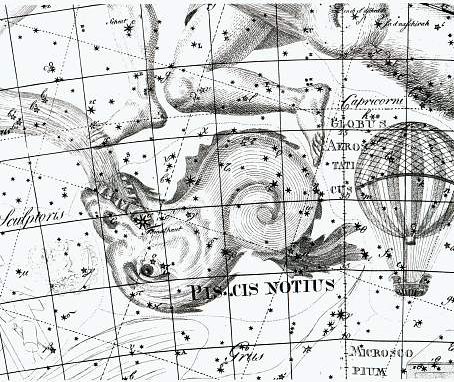 |
|
VISIBLE CLOSE TO
THE FULL MOON: |
|
ν Hydrae (163.1) |
No star listed (164)
ALTAIR (α
Aquilae) |
|
Aug 31 (243) |
Sept 1 |
|
JUNE 28 |
29 (180) |
 |
 |
 |
 |
 |
 |
 |
|
Ba7-23 |
Ba7-24 |
Ba7-25 |
Ba7-26 (277) |
Ba7-27 |
Ba7-28 |
Ba7-29 (280) |
|
ma to ihe kua tuu ki te toga |
ko to ihe kua tuu |
ki te kahi |
ko to vaé kua Rei |
kia ia ki te tagata mea kai |
e koia ura ia |
|
Kahi. Tuna; two sorts:
kahi aveave, kahi matamata. Vanaga.
Mgv.: kahi, to run, to
flow. Mq.: kahi, id. Churchill.
Rangitokona, prop up the heaven! //
Rangitokona, prop up the morning! // The pillar
stands in the empty space. The thought [memea]
stands in the earth-world - // Thought stands also
in the sky. The kahi stands in the
earth-world - // Kahi stands also in the sky.
The pillar stands, the pillar - // It ever stands,
the pillar of the sky. (Morriori creation myth
according to Legends of the South Seas.)
Ura, lobster. Ûra, flame, blaze (ûra
ahi), to become furious (with manava as
subject: ku-ûra-á te manava). Úraúra,
bright red. Vanaga. 1. Crayfish, lobster, prawn. P
Mgv.: ura, crayfish. Mq.: uá, lobster.
Ta.: oura, crayfish, lobster. 2. Fire,
burning, to be in flames; uraga, combustion,
flame, torch; hakaura, to cause to glow, to
kindle, to light. P Mgv., Ta.: ura, a flame,
to burn. Mq: uá, id. Uraga, burden,
load, weight. Uraura, vermilion, scarlet. P
Pau.: kurakura, red. Mgv.: uraura, an
inflamed countenance. Mq.: uáuá, red, ruddy.
Ta.: uraura, red. Churchill. |
|
INVISIBLY CLOSE
TO THE SUN: |
|
March 4 |
5 |
6 |
7 (66) |
8 |
9 |
10 |
|
FUM
AL SAMAKAH (Mouth of the Fish) = β Piscium
(348.3),
ζ
Gruis (348.5),
ο
Andromedae (348.9) |
Al Fargh al Mukdim-24 (Fore Spout) /
Purva Bhādrapadā-26 (First of the Blessed Feet) /
House-13 (Pig)
SCHEAT PEGASI =
β
Pegasi,
π
Piscis Austrini (349.3),
κ
Gruis (349.4),
MARKAB PEGASI =
α
Pegasi
(349.5)
*308.0 = *349.4 - *41.4 |
23h (350.0 = 167.4 + 182.6)
υ, θ Gruis (350.0), π Cephei (350.6), ι Gruis
(350.9)
|
 |
|
Cb6-27 |
|
kua tupu te kihikihi |
|
23h
(350.0) |
|
SIMMAH = γ Piscium
(351.7) |
φ Aquarii (352.0), ψ Aquarii (352.4), χ Aquarii
(352.6), γ Tucanae (352.8) |
ο Cephei (353.3),
KERB
(Bucket Rope) = τ Pegasi
(353.6) |
κ Piscium (354.2),
θ Piscium (354.4), υ Pegasi (354.9)
*313.0 = *354.4 - *41.4 |
|
CROSS-BARS |
|
... τ,
4.5, with υ, was Al Sufi's
Sa'd al Na'amah, which Knobel thinks should be
Al Na'āim, the Cross-bars over a well; but
they also were known as Al Karab, the
Bucket-rope. The usual titles for τ
- Markab and Sagma or Salma -
are from Bayer, but the last two should be Salm,
a Leathern Bucket ...
 |
|
VISIBLE CLOSE TO
THE FULL MOON: |
|
Wings-27 (Snake)
η
Octans (165.4),
ALKES (Shallow Basin) =
α
Crateris
(165.6)
*124.0 = *165.4 - *41.4 |
ANA-TIPU-4 (Upper-side-pillar
- where the guards stood)
MERAK (Loin, not Lion) =
β
Ursae Majoris
(166.2),
DUBHE (Bear) = α Ursae Majoris
(166.7) |
11h (167.4)
χ
Leonis,
χ¹
Hydrae (167.1),
χ²
Hydrae (167.3)
*167.4 - *41.4 = *126.0 |
AL SHARAS
(The Ribs)
=
β
Crateris
(168.6) |
Al Zubrah-9 (Mane) /
Purva Phalguni-11 (First Reddish One - Fig Tree)
ZOSMA (Girdle, not Belt) =
δ
Leonis
(169.2),
COXA (Hips) =
θ
Leonis (169.4)
*169.4 - *41.4 = *128.0 |
φ
Leonis (170.0),
ALULA
(First Spring of the Gazelle)
=
ξ,
ν
Ursae Majoris
(170.5),
LABRUM =
δ
Crateris
(170.6) |
σ
Leonis (171.1),
λ
Crateris (171.6),
ι
Leonis,
ε
Crateris (171.9) |
 |
|
Sept 2 |
3 |
4 |
5 (248) |
6 |
7 |
8 |
|
JUNE 30 |
JULY 1 |
2 |
3 (184) |
4 |
5 |
6 |
 |
 |
 |
 |
 |
 |
 |
|
Ba7-30 |
Ba7-31 |
Ba7-32 |
Ba7-33 (284) |
Ba7-34 |
Ba7-35 |
Ba7-36 |
|
e kua puo ia i te ahine |
kua vaha mea |
kua vaha mai ki te Raa |
kua haga ia ko te kava |
ku tupu aki mai ki te Raa |
|
Puo. (Also pu'a); pu'o nua,
one who covers himself with a nua
(blanket), that is to say, a human being.
Vanaga. 1. To dress, to clothe, to dress the
hair; puoa, clothed; puoa tahaga,
always dressed. 2. To daub, to besmear (cf.
pua 2); puo ei oone, to daub with
dirt, to smear. 3. Ata puo, to hill up a
plant. Churchill. |
|
INVISIBLY CLOSE
TO THE SUN: |
|
March 11 |
12 |
13 |
14 |
15 |
16 (75) |
17 |
|
ο Gruis,
Snowball Nebula = NGC7662 Andromedae
(355.0), τ Oct. (355.3) |
No star listed (356) |
ι Phoenicis (357.3),
ι Piscium (357.4), λ Andromedae (357.9)
*316.0 = *357.4 - *41.4 |
λ Piscium (358.0),
MANUS
CATENATA = ι Andromedae
(358.1),
ALRAI
= γ Cephei, θ Phoenicis (358.4),
κ Andromedae (358.7)
*358.4 - *41.4 = *317.0 |
ω Aquarii (359.2),
78 Pegasi
(359.5) |
ψ Andromedae (360.1),
σ Phoenicis (360.4)
*319.0 = *360.4 - *41.4
|
γ¹ Oct. (361.4),
φ Pegasi (361.7)
*320.0 = *361.4 - *41.4
|
|
MANUS
CATENATA |
 |
|
VISIBLE CLOSE TO
THE FULL MOON: |
|
γ
Crateris, π
Centauri (172.0),
κ
Crateris (172.5),
τ
Leonis (172.8)
GREDI (α Capricorni) |
ο¹ Centauri (173.8 |
GIAUZAR = λ Draconis
(174.0), ξ Hydrae (174.3), ο² Centauri, λ
Centauri (174.8) |
θ
Crateris (175.0), υ Leonis (175.2), ω Virginis
(175.3), ι Crateris (175.5) |
ο
Hydrae (176.1) |
ζ
Crateris,
ξ
Virginis (177.0),
λ
Muscae (177.1),
ν
Virg |
Al Sarfah-10 (Turn) /
Uttara Phalguni-12 (Second
Reddish One) /
Zibbat A.-16 (Tail of the
Lion) / Shēpu-arkū sha-A-17 (Hind Leg of the
Lion)
93 Leonis
(178.0),
DENEBOLA = β Leonis
(178.3),
ALARAPH (Unarmed) = β Virginis
(178.6) |
 |
|
Sept 9 |
10 |
11 |
12 (255) |
13 |
14 |
15 |
|
JULY 7 (188) |
8 |
9 |
10 (255 - 64) |
11 |
12 |
13 |
Although the development takes a drastic turn at Denebola (→
deneb ola → end of life) a 3rd week will follow before we
can reach to the end of line Ba7, i.e. to where the Full Moon
could be seen at the Southern Cross with the Black Raven, the
place where the Dry Old Sun would be taken care of, grasped
by the waiting hand at the horizon in the west.
... The Celtic year was divided into two
halves with the second half beginning in July, apparently
after a seven-day wake, or funeral feast, in the oak-king's
honour
...
Varu. 1. To cut
one's hair (te puoko). 2. To shave. 3. To paint, to
put on make-up: he varu te kiea. Varu a-roto,
to have diarrhoea. Vanaga. 1. Eight. 2. To shave, to remove
the beard, to shear, to clip, to rasp, a plane. Varuvaru,
to peel, to remove the bark, to plane, to scrape, to shear.
Churchill.
Varua. Spirit,
soul; sleep, dream. This is a Tahitian word, but the same
term may have been used in ancient times. Vanaga.
In Bierbach the accumulated evidence
connected varua with mummification and how the hair
was removed (varu), the body fluids drained (varu
a-roto) and after a period of 2 months it was make-up
time (he varu te kiea): ... Embalming is known and
practised with surprising skill in one particular family of
chiefs. Unlike the Egyptian method, as described by
Herodotus, it is performed in Samoa exclusively by women.
The viscera being removed and buried, they, day after day,
anoint the body with a mixture of oil and aromatic juices.
To let the fluids escape, they continue to puncture the body
all over with fine needles. In
about two months, the process of desiccation is completed.
The hair, which had been cut and laid aside at the
commencement of the operation, is now glued carefully on to
the scalp by a resin from the bush. The abdomen is filled up
with folds of native cloth; the body is wrapped up with
folds of the same material, and laid out on a mat, leaving
the hands, face, and head exposed ...
From which
observations it could be deduced that in the Gregorian Sun
calendar it was now the complementary situation - viz. the
Sun had to be at the 2nd Spout. Thus the last glyph in line Ba7
probably illustrates what could be seen at the Full Moon.
 |
 |
 |
 |
 |
 |
 |
|
Ba7-37 |
Ba7-38 |
Ba7-39 (290) |
Ba7-40 |
Ba7-41 |
Ba7-42 |
(74 * 3 = 222) |
|
ki te tagata noho |
ki te marama |
koia ra kua amo |
ki te henua |
e tagata oho era |
hakatupuaki era ki te Raa |
e rei kua tupu ki te toa |
|
Amo. To carry on one's
shoulders: O Yetú i-amo-ai te tatauró ki ruga
ki-te maúga Kalvario. Jesus carried his cross up
to the Calvary. Amoga, bundle; to tie in a
bundle: he-amoga i te hukahuka, to tie a
bundle of wood. Vanaga. 1. A yoke, to carry;
amoga, burden, load. 2. To bend, to beat a
path. Churchill. Âmo. 1. To clean, to clean
oneself: he-âmo i te umu, to clean the earth
oven; ka-âmo te hare, ka haka-maitaki, clean
the house, make it good; he-âmo i te ariga,
to clean one's face wetting it with one's hand. 2.
Clear; ku-âmo-á te ragi, the sky is clear. 3.
To slip, to slide, to glide (see pei-âmo).
Ámoámo, to lick up, to lap up, to dry; to slap
one's body dry (after swimming or bathing):
he-âmoâmo i te vaihai rima. Vanaga.
Amoamo. 1. To feed, to graze. 2. To spread, to
stretch (used of keete). Churchill.
Ko te rua o te raa i tu'i ai te
miro ki Rikitea tupuaki ki Magareva = On the
second day the boat arrived at Rikitea which is
close to Mangareva.
Toa. 1. Moa toa, cock. P Pau.,
Mgv., Mq., Ta.: toa, brave. Mq.: toa,
male. (But Mgv.: toa, female.) 2.
Sugarcane. T Pau., Mgv., Mq., Ta.: to,
id. (To., Niuē:
to,
id. Sa., Fu.: tolo,
id.) This form occurs only in Rapanui. In New
Zealand, where the plant does not grow, the name
is applied to any similar haulm. Churchill.
Mgv.: Toa,
ironwood. Ta.: toa,
id. Mq.: toa,
id. Sa.: toa,
id. Ha.: koa,
id. Churchill. Ta.: Toa,
a gout of blood. Sa.: to'a,
to coagulate. Toatoa,
a bad smell of the sea. Sa.: to'ato'a,
to smell bad. Churchill. T. Warrior, the
tree aito (Casuarina). Henry. T.
Toa, rock , coral. Churchill.
| Toa
'Canne à sucre en fleur'
(blooming sugar cane) is the explanation
given by Bishop Jaussen (according to
Barthel):
Die in den
Metorogesängen oft vorkommende Benennung
der Zeichen 65 bzw. 66 als toa
wurde von Jaussen auf das Zuckerrohr
bezogen; eine Auffassung, die keine Stütze
in den Tafeltexten findet.

Berücksichtigt man aber, daß die
Metorogesänge phonetisch nicht immer
ganz exakt niedergeschrieben wurden, so
findet man eine sinnvolle Lösung, wenn
man zwischen tôa
und to'a
underscheidet: Das erste Wort bedeutet
Zuckerrohr, das zweite dagegen Feind,
Mörder.
Englert
1948, 503: 'caña
de azucar' bzw. 'enemigo; asesino'.
Ferner: he to'a o te îka, el
que ha dado muerte a una persona'. |
|
|
INVISIBLY CLOSE
TO THE SUN: |
|
March 18 |
19 (78) |
20 (444) |
21 (0h) |
29 (168 - 80) |
23 |
24 |
|
DZANEB (→ Deneb, Tail) =
ω
Piscium (362.4),
γ²
Oct.
(362.8)
*362.4 - *41.4 = *321.0 |
η Tucanae (363.0), ψ Pegasi (363.1),
32 Piscium
(363.2),
π
Phoenicis (363.4),
ε Tucanae (363.6), τ Phoenicis (363.9)
*322.0 = *363.4 - *41.4 |
θ Oct.
(364.4)
*323.0 = *364.4 - *41.4 |
Al Fargh al Thāni-25 (Rear
Spout)

0h (365.25)
CAPH (Hand) = β Cassiopeiae,
SIRRAH (Navel of the Horse) =
α
Andromedae
(0.5),
ε
Phoenicis,
γ³
Oct.
(0.8) |
Uttara Bhādrapadā-27 (2nd of
the Blessed Feet) /
Wall-14 (Porcupine)
ο Oct. (1.3),
ALGENIB PEGASI = γ Pegasi
(1.8) |
χ Pegasi (2.1), θ Andromedae (2.7) |
σ Andromedae (3.0), ι Ceti (3.3), ζ Tucanae (3.5), ρ
Andromedae, π Tucanae (3.7) |
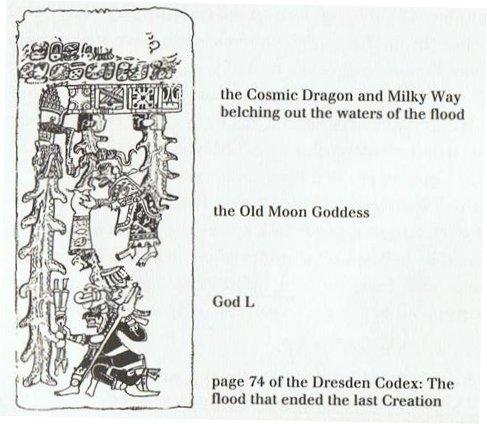 |
|
VISIBLE CLOSE TO
THE FULL MOON: |
|
PHEKDA ('Thigh') =
γ
Ursae Majoris,
β
Hydrae (179.3),
η
Crateris (179.9)
DENEB CYGNI (α Cygni) |
No star listed (180) |
π Virginis (181.0), θ Crucis (181.5) |
ο
Virginis (182.1),
η
Crucis (182.5) |
ALCHITA = α Corvi, MA WEI (Tail of the Horse) = δ
Centauri
(183.1),
MINKAR =
ε
Corvi
(183.7),
ρ
Centauri (183.9) |
PÁLIDA (Pale) = δ Crucis
(184.6),
MEGREZ (Root of the Tail) =
δ
Ursae Majoris
(184.9) |
Hasta-13 (Hand) /
Chariot-28 (Worm)
GIENAH (Wing) = γ Corvi
(185.1),
ε Muscae (185.2),
ζ Crucis
(185.4),
ZANIAH (Corner) = η Virginis
(185.9)
*144.0 = *185.4 - *41.4 |
|
... Ishtar,
scorned, goes up to heaven in a rage, and extracts
from Anu the promise that he will send down the Bull
of Heaven to avenge her. The Bull descends, awesome
to behold. With his first snort he downs a hundred
warriors. But the two heroes tackle
him. Enkidu takes hold of him by
the tail, so that Gilgamesh as espada can
come in between the horns for the kill. The artisans
of the town admire the size of those horns: 'thirty
pounds was their content of lapis lazuli'.
(Lapis lazuli is the color sacred to Styx, as we
have seen. In Mexico it is turquoise.) Ishtar
appears on the walls of Uruk and curses the two
heroes who have shamed her, but Enkidu tears out the
right thigh of the Bull of Heaven and flings it in
her face, amidst brutal taunts. It seems to be part
of established procedure in those circles. Susanowo
did the same to the sun-goddess Amaterasu, and so
did Odin the Wild Hunter to the man who stymied him.
A scene of popular triumph and rejoicings follows.
But the gods have decided that Enkidu must die, and
he is warned by a somber dream after he falls sick.
The composition of the epic has been hitherto
uncouth and repetitious and, although it remains
repetitious, it becomes poetry here. The despair and
terror of Gilgamesh at watching the death of his
friend is a more searing scene than Prince Gautama's
'discovery' of mortality. 'Hearken unto me, O
elders, (and give ear) unto me! // It is for
Enk(idu), my friend, that I weep, // Crying bitterly
like unto a wailing woman // (My friend), my
(younger broth)er (?), who chased // the wild ass of
the open country (and) the panther of the steppe. //
Who seized and (killed) the bull of heaven; // Who
overthrew Humbaba, that (dwelt) in the (cedar)
forest - ! // Now what
sleep is this that has taken hold of (thee)? // Thou
hast become dark and canst not hear (me)'. // But he
does not lift (his eyes). // He touched his heart,
but it did not beat. // Then he veiled (his) friend
like a bride (...) // He lifted his voice like a
lion // Like a lioness robbed of (her) whelps ...
'When I die, shall I not be like unto Enkidu? //
Sorrow has entered my heart // I am afraid of death
and roam over the desert ... // (Him the fate of
mankind has overtaken) // Six days and seven nights
I wept over him //
Until the worm fell on his
face. // How can I be silent? How can I be quiet? //
My friend, whom I loved, has turned to clay' ... |
|
Sept 16 |
17 (260) |
18 (9 * 29) |
19 (80 + 182) |
20 |
21 |
Equinox |
|
JULY 14 |
15 (4 * 49) |
16 |
17 |
18 |
19 (200) |
20 |
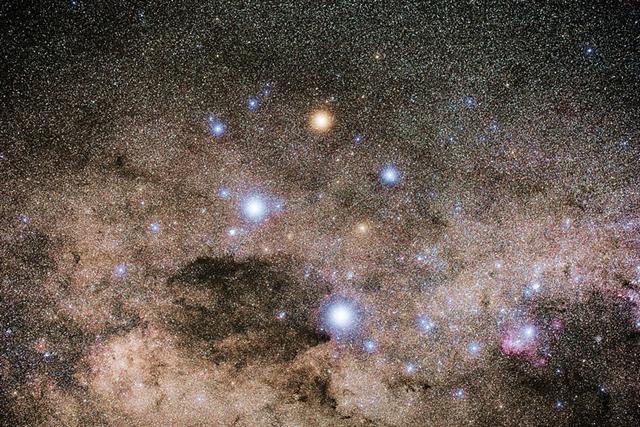
|
















.jpg)
























